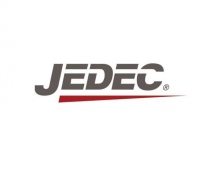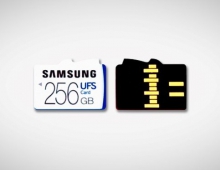
JEDEC Releases LPDDR4 Standard
JEDEC today announced the publication of JESD209-4 Low Power Double Data Rate 4 (LPDDR4), a kind of memory designed to boost memory speed and efficiency for mobile computing devices. LPDDR4 will eventually operate at an I/O rate of 4266 MT/s, twice that of LPDDR3. The new interface promises to have an enormous impact on the performance and capabilities of next-generation portable electronics.
LPDDR4 launches with an I/O data rate of 3200 MT/s and a target speed of 4266 MT/s, compared to 2133 MT/s for LPDDR3. To achieve this performance, the members of the committee had to completely redesign the architecture, going from a one-channel die with 16 bits per channel to a two-channel die with 16 bits per channel, for a total of 32 bits.
"LPDDR3 was an evolutionary change from LPDDR2. With LPDDR4, the architecture is completely different," said Hung Vuong, Chairman of JC-42.6. "We knew the only way to achieve the performance that the industry required was to make a total departure from previous generations."

The two-channel architecture reduces the distance data signals must travel from the memory array to the I/O bond pads. This reduces the power required to transmit the large amount of data the LPDDR4 interface requires. Because most of the area of a memory device is taken up by the memory array, doubling the interface area has a minimal impact on the overall footprint.
The two-channel architecture also allows the clock and address bus to be grouped together with the data bus. Thus, the skew between data bus to the clock and address bus is minimized, allowing the LPDDR4 device to reach a higher data rate. This saves power and improves timing margins compared to the LPDDR3 architecture.
Recognizing that extending the LPDDR3 interface to higher frequencies would consume too much power, the JEDEC committee decided to implement a significant change in LPDDR4’s I/O signaling to low-voltage swing-terminated logic (LVSTL). LPDDR4’s LVSTL I/O signaling voltage of 367 or 440mV is less than 50% the I/O voltage swing of LPDDR3. This reduces power while enabling high-frequency operation. In addition, by using Vssq termination and data bus inversion (DBI), termination power can be minimized since any I/O signal driving a "0" consumes no termination power.
Several other steps were taken to save power. The operating voltage was reduced from the 1.2V of previous generations to 1.1V. Also, the standard was specifically designed to enable power-efficient operation at a wide range of frequencies. The I/O can operate in un-terminated mode at low frequencies with a reduced voltage swing, and the standard allows rapid switching between operating points so the lower frequency operation can be used whenever possible.
This rapid switching is enabled by the addition of frequency set points (FSPs). LPDDR4 specifies two FSPs, which are copies of all the DRAM registers that store operating parameters which might need to be changed for operation at two different frequencies. Once both operating frequencies are trained and the parameters stored in each of the two corresponding FSPs, switching between the frequencies can be accomplished by a single mode register write. This reduces the latency for frequency changes, and enables the system to operate at the optimal speed for the workload more often.
"It supports end-user flexibility," noted Vuong. "Some designers like to run their devices as fast as they can and then put them to sleep. Others like to run at lower frequencies – and lower power – when possible. A process might take a little longer but that’s a trade-off they’re willing to make. We designed LPDDR4 to be flexible enough to allow the end-user to decide what they want to do." With that flexibility comes superior performance – an LPDDR4 device, at a similar data rate, will consume less power than an LPDDR3 device.
Key specifications include:
- Two-channel architecture
- Internal Vref supplies for CA and DQ
- Data Bus Inversion (DBI-DC)
- ODT for CA and DQ
- I/O throughput: 3200 MT/s, rising to 4266 MT/s
- Signaling voltage: 367mV or 440mV
- Operating voltage: 1.1V
- Pre-fetch size: 32B per channel
- Topology: Point to point, PoP, MCP
- Max I/O capacitance: 1.3pF
- Write leveling
- 6-pin SDR CA bus CA training (12 pins per two channels)
- As with previous low-power DRAM generations, LPDDR4 does not require a delay-locked loop (DLL) or phase-locked loop (PLL)





















